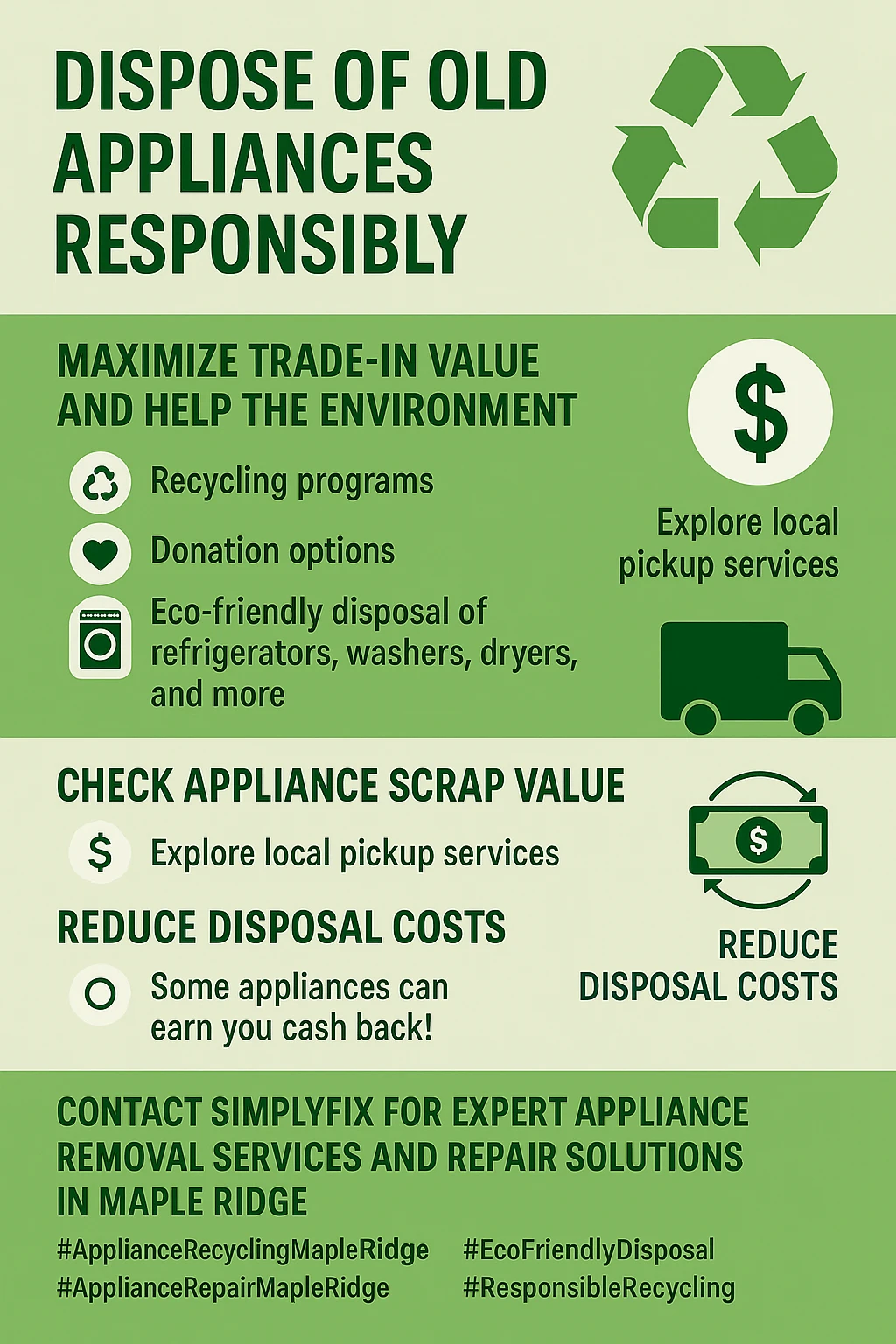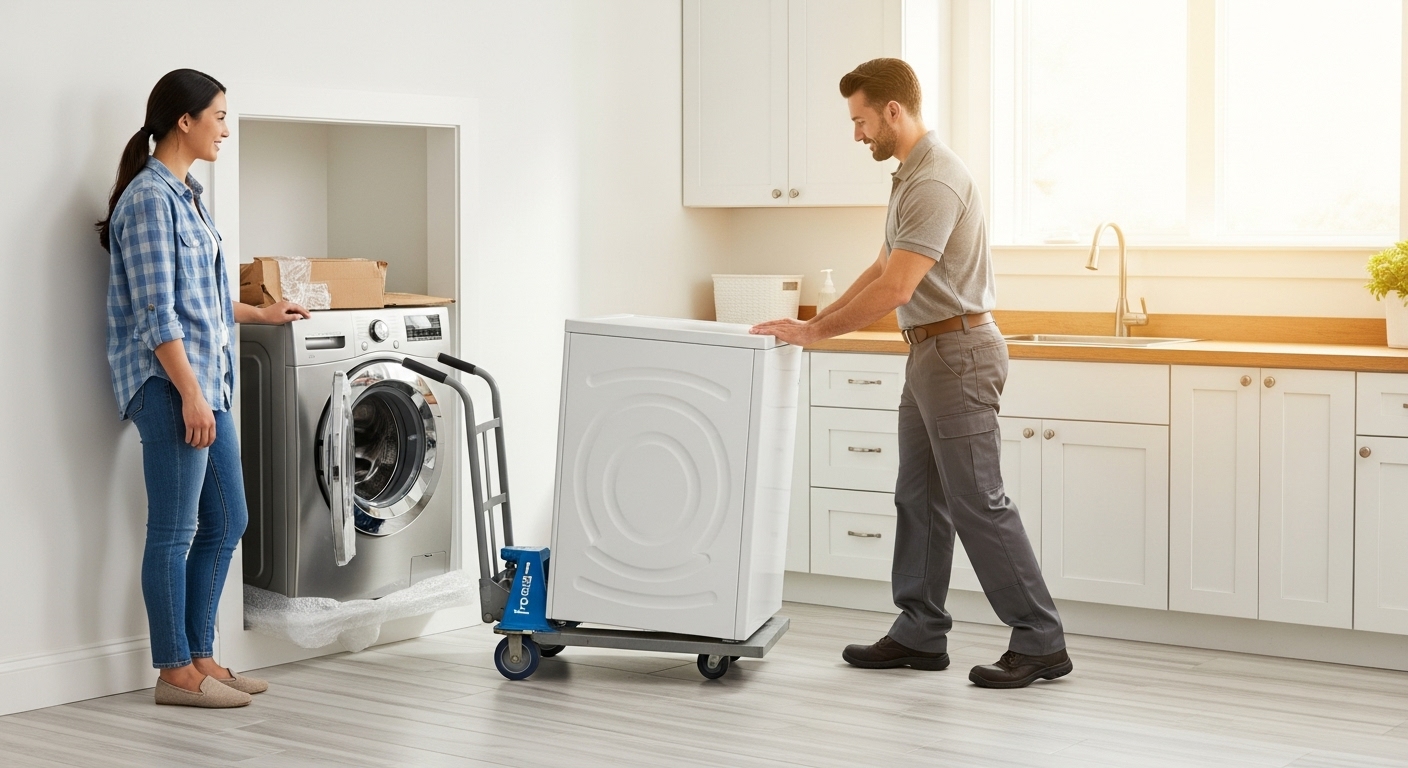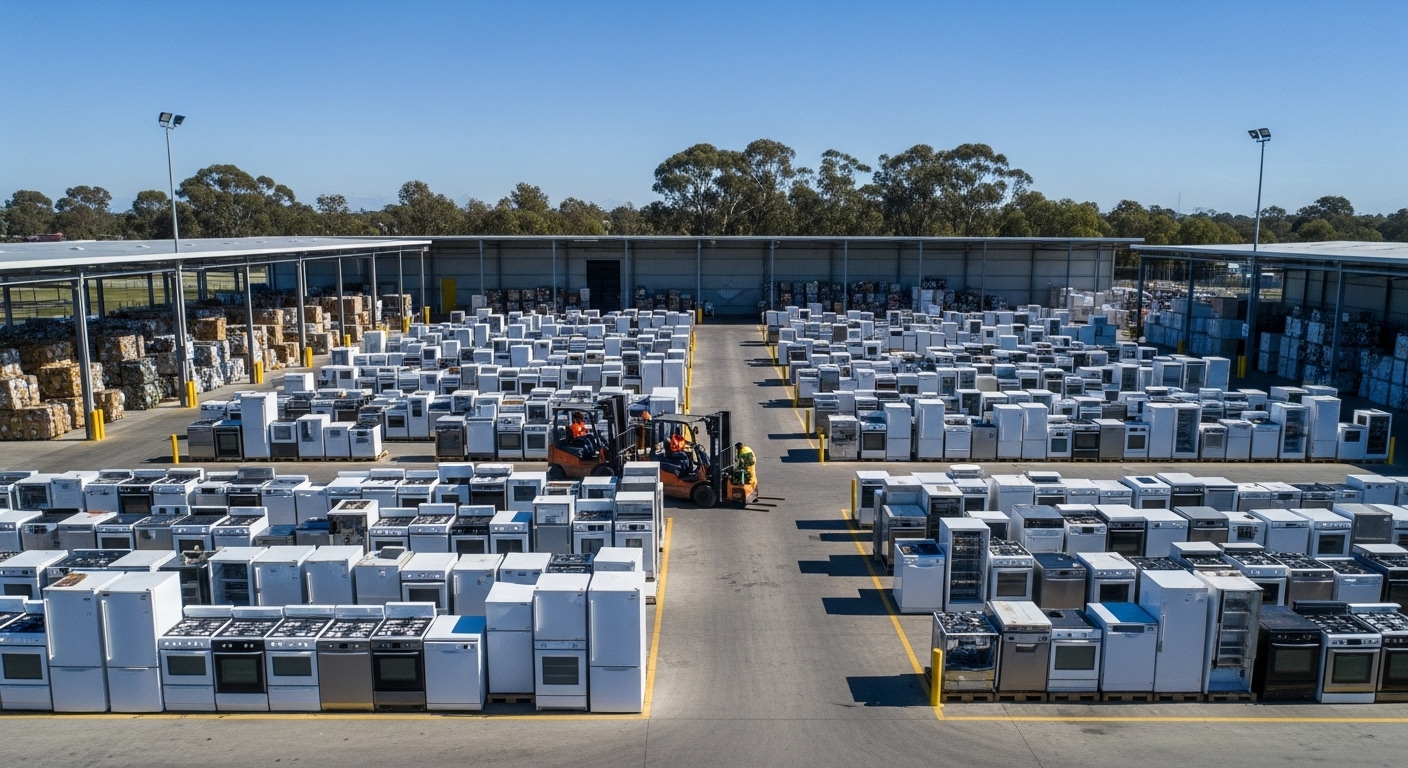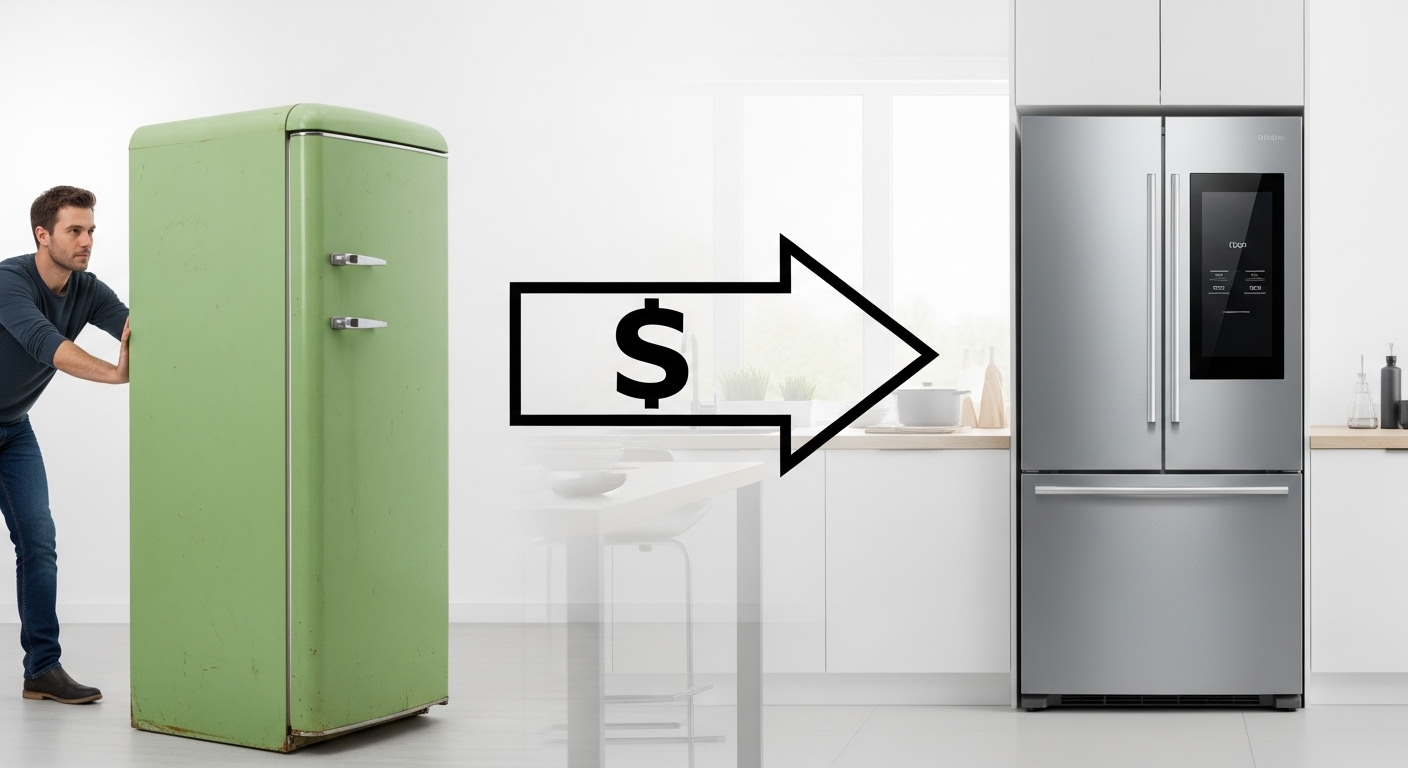Appliance Recycling and Disposal Guide: How Maple Ridge Homeowners Can Responsibly Get rid of Old Appliances While Maximizing Trade-In Value
Struggling with what to do with that old fridge taking up space in your garage, or wondering if there’s a smarter way to dispose of your broken washing machine than just hauling it to the curb? We’ve got you covered with everything Maple Ridge homeowners need to know about turning appliance disposal from a headache into an opportunity – whether that’s scoring some cash, helping the environment, or both!Picture this: you’re finally upgrading that ancient dishwasher that sounds like a jet engine every time it runs, but now you’re stuck with a 200-pound paperweight in your kitchen. As a millennial homeowner who’s been through this exact scenario (twice, actually – don’t ask), I totally get the overwhelm of trying to figure out the best disposal route. The good news? Maple Ridge has some seriously impressive options that can actually put money back in your pocket while doing right by Mother Earth. What started as research for my own appliance upgrade project turned into discovering a whole ecosystem of disposal options I never knew existed. From municipal programs that’ll pick up your old washer for less than the cost of a nice dinner out, to trade-in programs offering hundreds of dollars in credits, there are way more opportunities than just calling a junk removal service. Plus, with all the environmental benefits of proper appliance recycling, you can feel good about your choices too.The best part? Many of these options are actually more convenient and cost-effective than traditional disposal methods. Whether you’re dealing with a single broken microwave or doing a complete kitchen overhaul, understanding your options can save you serious money while contributing to Maple Ridge’s sustainability goals.
Key Outtakes
- Ridge Meadows Recycling offers municipal pickup service for $68.25 (tax included) and accepts multiple appliances per trip, making it cost-effective for bulk disposal
- Manufacturer trade-in programs like Samsung’s can provide up to $500 in credits toward new purchases while including free professional haul-away service
- Proper appliance recycling prevents approximately 4,260 metric tons of CO2 emissions per 1,000 refrigerators and recovers valuable metals like copper and aluminum
- Scrap yards typically pay $10-$50 for major appliances, with refrigerators and air conditioners commanding higher values due to copper content
- Refrigerated appliances require certified technician removal of harmful refrigerants before disposal, making professional services essential for legal compliance

Understanding Maple Ridge’s Appliance Disposal Landscape

The appliance disposal game in Maple Ridge is honestly way more sophisticated than I expected when I first started digging into this. We’re not just talking about throwing stuff in a truck and hoping for the best – there’s a whole network of municipal services, private companies, and manufacturer programs working together to make appliance disposal both environmentally responsible and surprisingly affordable.Ridge Meadows Recycling Society operates the main municipal facility at 10092 – 236th Street, and this place is basically the MVP of local appliance recycling. They handle everything from fridges and freezers to stoves, furnaces, hot water tanks, washers, dryers, TVs, computers, and dishwashers. What I love about their approach is that it’s not just about getting rid of stuff – they’re genuinely committed to proper environmental handling while keeping costs reasonable for residents. The private sector has really stepped up their game too. JUSTJUNK provides comprehensive removal services throughout Maple Ridge, handling everything from pickup to proper disposal while focusing on recycling and donation whenever possible. Their whole business model is built around taking the physical burden off homeowners while ensuring responsible disposal practices. Fraser Valley Junk Solutions has found a clever niche with weight-based pricing that often beats volume-based competitors – we’re talking $250-$300 for full trailer loads compared to some competitors charging $698.Here’s where things get really interesting: manufacturer trade-in programs have created some genuine value opportunities that most people don’t even know exist. Samsung’s trade-in program offers credits up to $500 toward new appliance purchases while providing free removal of old units during delivery. This completely eliminates disposal costs while reducing the net cost of new purchases – it’s basically like getting paid to upgrade your appliances.Local businesses have also carved out specialized niches that serve specific community needs. Haney Bottle Depot focuses specifically on small appliance recycling, accepting items like mixers, microwaves, food processors, electric blenders, and slow cookers. This specialization ensures that even smaller household items get proper recycling treatment instead of ending up in landfills where they can cause real environmental problems.
Maximizing Trade-In Value Through Strategic Timing and Preparation

After going through multiple appliance replacements myself, I’ve learned that timing is absolutely everything when it comes to maximizing your return on old appliances. The difference between random disposal and strategic planning can literally be hundreds of dollars – money that’s way better off in your pocket than lining someone else’s.Manufacturer trade-in programs typically offer the highest guaranteed returns with minimal effort from homeowners. Samsung’s program demonstrates this potential perfectly, offering up to $500 in trade-in credits plus complimentary professional haul-away service. The beauty of these programs is that you can apply credits directly to new purchases while completely eliminating disposal logistics. When you’re doing a coordinated kitchen upgrade with multiple appliances, these credits can stack up to create some serious cumulative savings. Independent selling through online marketplaces and local channels can yield higher returns, but it requires significantly more effort and time investment. Scrap yards typically pay between $10-$50 for major appliances, with variation based on current metal pricing, appliance size, weight, and condition. However, the scrap value can increase substantially when valuable components are separated and sold individually. Refrigerators and freezers are particularly valuable because they contain copper tubing and compressors with copper and aluminum parts.Preparation strategies can make a huge difference in both trade-in values and scrap returns. Appliances need to be unplugged 24-48 hours before recycling to allow proper power-down and defrosting. Thorough cleaning removes food debris and personal items while making units more appealing to recyclers and trade-in evaluators. For refrigerated appliances, certified technicians must remove harmful refrigerants like CFCs or HFCs before recycling – this isn’t optional, it’s actually required by law.The condition assessment process varies significantly between trade-in programs and independent sales channels. Trade-in programs typically accept appliances regardless of working condition, focusing on removal convenience rather than functionality. Independent buyers, however, place premium value on working units, with functional appliances commanding significantly higher prices in secondary markets. This distinction makes trade-in programs particularly attractive for non-functional units while working appliances may generate better returns through private sales.Market timing considerations extend beyond manufacturer incentive cycles to include seasonal demand patterns and local economic factors. The rental market in Maple Ridge creates consistent demand for used appliances, particularly during student housing transitions and seasonal tenant changes. Understanding these patterns helps homeowners time their disposal decisions to maximize returns while supporting local housing needs.
Environmental Impact and Responsible Disposal Practices

Let’s be real – the environmental side of appliance disposal goes way deeper than just keeping stuff out of landfills. When I first started researching this topic, I was honestly shocked to learn about the massive environmental impact that proper appliance disposal can have. We’re talking about real, measurable benefits that extend across multiple environmental systems.Proper appliance recycling prevents approximately 4,260 metric tons of carbon dioxide equivalent emissions for every 1,000 old refrigerators permanently retired. That’s not just some feel-good number – it represents both the elimination of inefficient energy consumption and the prevention of harmful refrigerant releases. The EPA’s Responsible Appliance Disposal program actually quantifies these benefits, showing that removing just


Recent Comments